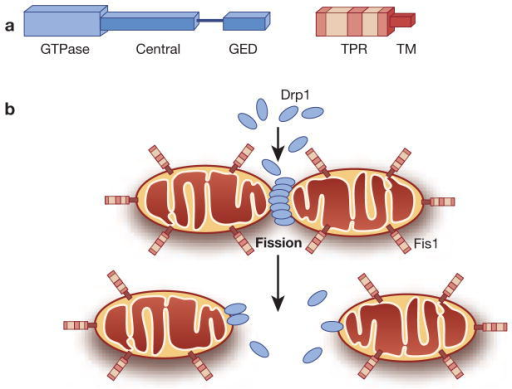

Cellular apoptosis induced by heat stress is likely related to mitochondrial ROS accumulation to toxic or lethal levels. In winter wheat cells, S-heat stress treatment at 37 to 45☌ has no effect on cell viability however, exposure for 30 min at 50–60☌ leads to almost complete cell death in association with protein degradation ( Fedyaeva et al. ROS accumulation in them leads to disruption of membrane integrity, the release of cytochrome c and the activation of caspase-like protease, resulting in programmed cell death (PCD) ( Singh et al. Mitochondria are involved in the production of ROS within plant cells. However, it remains unclear whether the mitochondrial fission complex contributes to L-heat tolerance. ELM1 interacts with and is required for the relocalization of DRP3A and DRP3B, from the cytosol to mitochondrial fission sites ( Arimura et al. Interestingly, orthologues of ELM1 are found in plants but not in other eukaryotes ( Nagaoka et al. Elongated mitochondria1 ( ELM1) is responsible for the phenotype of elongated mitochondria. They are functionally redundant in mitochondrial fission but have distinct roles in peroxisome fission ( Fujimoto et al. Arabidopsis possesses mitochondrial fission factors, including the paralogous DRP3A and DRP3B proteins, which belong to the dynamin family and are localized to mitochondria and peroxisomes ( Mano et al. Imbalance of fission and fusion can cause deficits in mitochondrial respiration ability, morphology and motility ( Linkermann et al. Mitochondria dynamically change their shapes in tight coupling with fission and fusion. To maintain their functions, they remodel themselves in response to developmental and environmental cues ( Jacoby et al. Mitochondria are multifunctional organelles involved in energy production. We previously revealed that H 2O 2 accumulated in Arabidopsis plants exposed to L-heat stress (37☌, 5 d) but not to S-heat stress (42☌, 40 min), and ROS scavenging involving CAT2 is responsible for L-heat tolerance ( Ono et al.

However, the response to L-heat stress and its molecular basis remain poorly understood. In the S-heat-stress responses of Arabidopsis plants, HsfA1 and HsfA2 play central roles in transcriptional regulation of heat-responsive genes, including those encoding heat shock proteins (HSPs) HsfA1 overexpression improves tolerance ( Yoshida et al. Nevertheless, most previous studies have used S-heat stress, such as 42☌ for 30–60 min, for the evaluation of heat tolerance ( Yoshida et al. Plants are often exposed not only to short-term (S) severe heat stress but also to long-term (L) heat stress over several consecutive days. High temperature is one of the most detrimental abiotic stresses for plants and can greatly affect plant growth and crop production ( Lobell et al. These findings suggest that mitochondrial fission and function are important in L-heat tolerance of Arabidopsis. Furthermore, WT plants treated with a mitochondrial myosin ATPase inhibitor were hypersensitive to L-heat stress. L-heat stress caused mitochondrial dysfunction and cell death in sloh5. The sloh5 mutant contained massively elongated mitochondria. Transcript levels of ELM1, DRP3A and DRP3B were time-dependently increased by L-heat stress, and drp3a drp3b double mutants were hypersensitive to L-heat stress. The causal gene, SLOH5, is identical to elongated mitochondria1 ( ELM1), which plays an important role in mitochondrial fission in conjunction with dynamin-related proteins DRP3A and DRP3B. The sloh5 mutant was hypersensitive to L-heat but not to S-heat, osmo-shock, salt-shock or oxidative stress. To elucidate the mechanisms, we isolated the new sensitive to long-term heat5 ( sloh5) mutant from EMS-mutagenized seeds of L-heat-tolerant Col-0. A few Arabidopsis mutants defective in L-heat tolerance have been identified, but the molecular mechanisms involved are less well understood than those involved in S-heat tolerance. Plants are often exposed not only to short-term (S) heat stress but also to long-term (L) heat stress over several consecutive days.


 0 kommentar(er)
0 kommentar(er)
